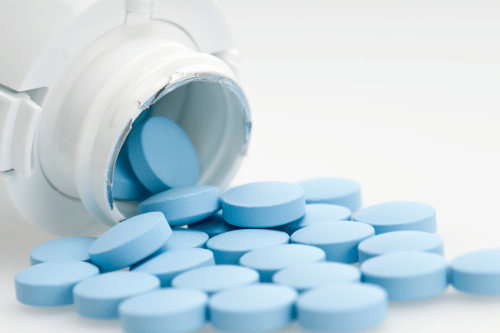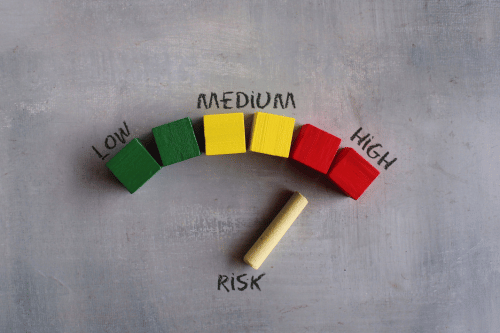Focalin vs Adderall: Comparing ADHD Treatments
Attention Deficit Hyperactivity Disorder (ADHD) is a prevalent mental health condition impacting millions worldwide. Individuals with ADHD face challenges in maintaining focus, controlling impulsive behaviors, and managing tasks that require sustained attention. Treatments for ADHD often include stimulant medications, with Focalin and Adderall being two of the most frequently prescribed options. Despite their similarities, these medications vary significantly in their ingredients, mechanisms, side effects, and overall effectiveness.
In this extensive guide, we’ll examine Focalin vs Adderall to help you understand the distinctions between these prescription medication and their roles in managing ADHD. This comparison will address common questions, delve into potential side effects, and explore considerations for those considering these medications. This article aims to offer a comprehensive understanding, making it easier for individuals and families to make informed decisions regarding ADHD treatment options.
Understanding ADHD and Stimulant Medications

What is Attention Deficit Hyperactivity Disorder (ADHD)?
ADHD is a chronic condition often diagnosed in childhood, though symptoms can persist into adulthood. The disorder is characterized by persistent symptoms of inattention, hyperactivity, and impulsivity. These symptoms vary in severity and can interfere with day-to-day activities, academic performance, and social relationships. Although ADHD is often thought of as a childhood disorder, many adults also experience its symptoms, sometimes undiagnosed for years.
Stimulant Medications for ADHD
Stimulant medications like Focalin and Adderall have been prescribed for decades to help manage ADHD symptoms. These medications work by enhancing neurotransmitter activity in the brain, particularly focusing on dopamine and norepinephrine—chemicals involved in mood, focus, and attention.
Focalin and Adderall fall under the class of central nervous system (CNS) stimulants, which are widely considered to be among the most effective treatments for ADHD. By influencing neurotransmitter levels, these medications help individuals improve their ability to focus, follow directions, complete tasks, and manage impulsive behaviors.
An Overview of Focalin
What is Focalin?
Focalin is a dexmethylphenidate-based medication, meaning it contains a purified form of methylphenidate, a compound commonly used to treat ADHD. Focalin targets specific neurotransmitters in the brain, such as dopamine and norepinephrine, to help improve focus, attention, and impulse control.
Types of Focalin: Immediate Release and Focalin XR
Focalin is available in both immediate-release (IR) and extended-release (XR) formulations, providing options that suit different schedules and symptom management needs:
Focalin IR is generally taken multiple times per day and offers quicker symptom relief, lasting about 4-6 hours.
Focalin XR is designed to release gradually over time, allowing it to control symptoms for up to 12 hours with a single dose.
Benefits of Focalin for ADHD
Focalin has become a popular ADHD treatment for several reasons:
Flexibility: With both IR and XR options, patients can choose a formulation that fits their daily routines.
Efficacy: Focalin has been shown to be effective in reducing ADHD symptoms, especially in children and adolescents.
Purity: As a dexmethylphenidate medication, Focalin provides a more refined approach to targeting neurotransmitter activity, which may offer fewer side effects compared to other stimulants.
An Overview of Adderall

What is Adderall?
Adderall is composed of mixed amphetamine salts, including both amphetamine sulfate and dextroamphetamine sulfate. This combination works to stimulate the central nervous system by increasing dopamine and norepinephrine release in the brain, which in turn improves focus and reduces hyperactive behaviors.
Types of Adderall: Immediate Release and Extended Release
Adderall also comes in two main formulations—immediate-release (IR) and extended-release (XR):
Adderall IR typically works for 4-6 hours, making it ideal for situations requiring short-term symptom control.
Adderall XR lasts up to 12 hours, offering consistent coverage for individuals who need all-day symptom management.
Why Adderall is Effective for ADHD
Adderall’s unique blend of amphetamine salts provides a powerful boost to focus and attention, making it a popular choice for both children and adults with ADHD. It’s widely prescribed due to its:
Potency: The amphetamine-based formulation offers robust symptom control.
Extended Coverage: With the XR version, individuals can experience sustained symptom relief.
Versatility: The IR and XR options give patients flexibility, allowing them to match their medication to their schedule and daily activities.
How Focalin and Adderall Work: Mechanisms of Action
How Does Focalin Work?
Focalin works by inhibiting the reuptake of dopamine and norepinephrine. This action increases the availability of these neurotransmitters, enhancing the individual’s ability to focus and control impulses. Since Focalin targets these neurotransmitters specifically, it may produce fewer side effects than medications that affect other brain chemicals.
How Does Adderall Work?
Adderall, on the other hand, works through two mechanisms: it promotes the release of dopamine and norepinephrine while also blocking their reuptake. This dual action not only increases the levels of these neurotransmitters but also prolongs their activity, providing stronger and more sustained effects. Adderall’s mixed amphetamine salts include amphetamine sulfate, contributing to its dual action mechanism.
Comparing the Impact on the Brain
While both medications are effective, their mechanisms make them suitable for different individuals:
Focalin may produce a smoother, less intense experience, with fewer fluctuations in focus and energy.
Adderall tends to offer a more pronounced boost in energy and alertness, making it ideal for individuals who require a stronger stimulant effect.
Dosage Forms and Durations of Action

Immediate Release (IR) vs. Extended Release (XR)
Both Focalin and Adderall come in immediate-release and extended-release forms, providing options to match different treatment needs.
Immediate Release (IR)
The immediate-release versions offer quick symptom relief and typically last 4-6 hours. They are usually taken multiple times throughout the day, which can be useful for individuals who need flexible symptom control at specific times.
Extended Release (XR)
The extended-release versions provide more prolonged symptom control, lasting up to 12 hours. These formulations are preferred for individuals with consistent daily schedules who benefit from once-daily dosing.
How to Choose Between IR and XR
Choosing between IR and XR versions depends on the individual’s lifestyle, symptom severity, and daily routine:
IR formulations may be better suited for individuals who need flexible, short-term symptom control.
XR formulations work well for those requiring stable, all-day symptom control with minimal dosing.
Comparing Side Effects of Focalin vs. Adderall
Both medications come with potential side effects. The likelihood and intensity of these effects depend on various factors, including dosage, individual tolerance, and overall health.
Common Side Effects of Focalin
Stomach pain
Nausea and headaches
Decreased appetite and potential weight loss
Insomnia and other sleep disturbances
Common Side Effects of Adderall
Increased blood pressure and heart rate
Mood swings and irritability
Anxiety
Dry mouth, dizziness, and weight loss
Differences in Side Effects
The differences in these side effects stem from the medications’ distinct ingredients and mechanisms:
Focalin is often associated with gastrointestinal side effects, such as stomach pain.
Adderall may lead to a more significant increase in blood pressure and heart rate due to its amphetamine content.
Managing Side Effects
Managing side effects often involves working closely with a healthcare provider to adjust the dosage or switch to a different formulation. The Drug Enforcement Administration classifies both Focalin and Adderall as Schedule II controlled substances, highlighting the importance of using them under medical supervision due to their high potential for abuse and dependence. Behavioral strategies, such as taking the medication with food or adjusting the timing, can also minimize side effects.
Serious Side Effects and Risks

While both Focalin and Adderall are effective in managing ADHD symptoms, they come with serious side effects and risks that should not be overlooked.
Drug Interactions and Contraindications
Both Focalin and Adderall can interact with various other medications, potentially leading to adverse effects. Therefore, individuals must consult their healthcare provider about all medications and supplements they are taking before starting ADHD treatment.
Potential Drug Interactions
Some notable drug interactions include:
Monoamine oxidase inhibitors (MAOIs): Combining Focalin or Adderall with MAOIs can result in dangerous increases in blood pressure.
Antidepressants: Certain antidepressants, particularly tricyclics and SSRIs, can interact with ADHD medications, potentially intensifying side effects.
Blood pressure medications: Using ADHD medications with blood pressure medications can either enhance or reduce the effectiveness of both, possibly causing complications.
Contraindications
Both medications are not recommended for individuals with certain health conditions, such as heart disease, high blood pressure, and glaucoma. It’s essential to discuss any pre-existing medical conditions with a healthcare provider before beginning ADHD treatment.
Long-Term Use, Dependence, and Withdrawal
As Schedule II controlled substances, both Focalin and Adderall have a potential for abuse and dependence, particularly when taken for extended periods.
Signs of Dependence

Signs of dependence may include:
Needing higher doses to achieve the same therapeutic effect
Experiencing withdrawal symptoms without the medication
Developing a reliance on the medication to perform daily tasks
Managing Withdrawal
Withdrawal symptoms can include fatigue, mood changes, and depression. Gradual tapering under medical supervision is generally recommended to minimize discomfort and health risks. For those who are experiencing withdrawal, behavioral therapy and support from a healthcare provider can be beneficial.
Practical Considerations
When deciding between Focalin and Adderall, several practical considerations can help guide your choice. These include insurance coverage, cost, dosage and administration, potential side effects, and drug interactions.
Insurance Coverage and Cost Comparison
Both Focalin and Adderall are prescription medications, and their costs can vary significantly depending on your insurance plan. Here’s a general comparison:
Focalin:- Brand-name: $120-$150 per 30-day supply
Generic: $30-$50 per 30-day supply
Adderall:- Brand-name: $150-$200 per 30-day supply
Generic: $50-$70 per 30-day supply
It’s essential to check with your insurance provider to determine coverage and out-of-pocket costs, including copayments or coinsurance.
Storage and Disposal
Proper storage and disposal of Focalin and Adderall are crucial to ensure safety and effectiveness.
Switching Medications
Switching from Focalin to Adderall or vice versa requires careful consideration and consultation with your healthcare provider.
Frequently Asked Questions
What is the difference between Focalin and Adderall?
Focalin is derived from methylphenidate, while Adderall contains mixed amphetamine salts. This difference leads to varied effects on the brain, with Focalin providing a potentially smoother experience and Adderall offering a more intense stimulant effect.
Can Focalin and Adderall be used together?
It’s uncommon to prescribe both medications together. However, healthcare providers may sometimes recommend switching between them if one is not effective, or use them in rotation under specific treatment plans.
Are there non-stimulant alternatives?
Non central nervous system stimulants medication such as atomoxetine (Strattera) and guanfacine (Intuniv) are also prescribed for ADHD. These alternatives may be suitable for individuals who experience severe side effects with stimulants or those at risk for stimulant-related complications.
Conclusion
Choosing between Focalin and generic Adderall involves considering side effects, duration, and individual health factors. Both medications can effectively manage ADHD symptoms, but understanding their differences can help individuals make more informed choices about their treatment. By consulting with a healthcare provider and monitoring side effects, individuals can work to find the ADHD medication that best fits their needs and lifestyle, ultimately improving mental health and daily functioning.





